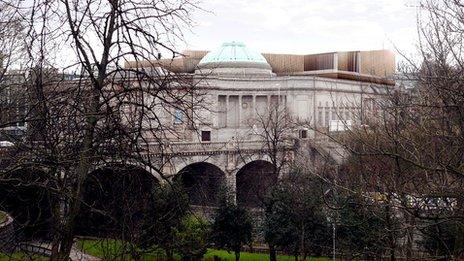Aberdeen Art Gallery reopens after £34.6m revamp
- Published
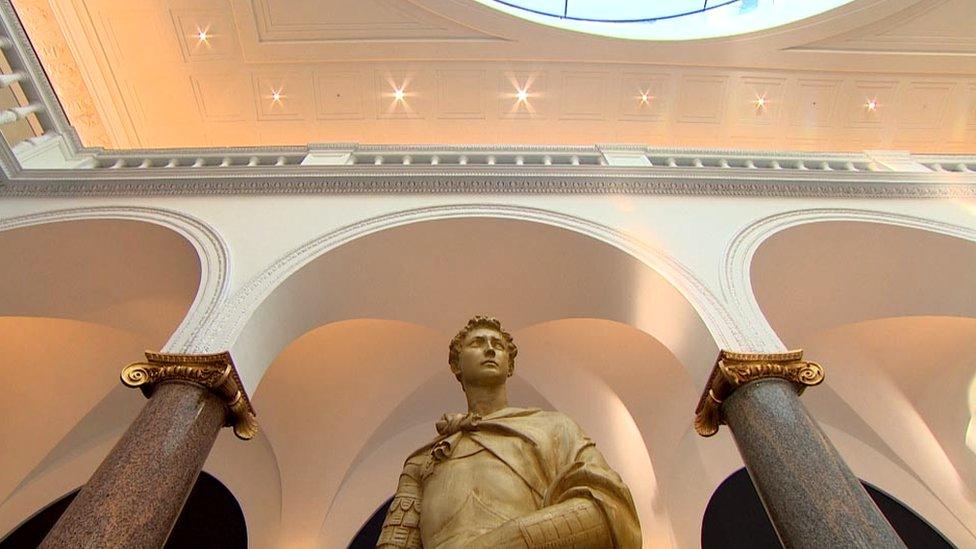
It is hoped the gallery can attract 250,000 visitors a year
Aberdeen Art Gallery is reopening to the public after a four-year refurbishment which cost £34.6m.
The project was completed two years behind schedule and over the original £30m budget - but the council said it had wanted to ensure the work was "done right".
Aberdeen Art Gallery has one of the finest art collections in the UK - including works by Joan Eardley, Barbara Hepworth, Samuel Peploe and Tracey Emin.
Its reopening is part of a far bigger cultural regeneration which has been years in the making, but is only now falling into place.
The city centre has already welcomed back the revamped Music Hall and His Majesty's Theatre (HMT).
In August, the new P&J Live complex opened to the public, offering a platform for the kind of large-scale stage shows which would previously have required a trip to the central belt.
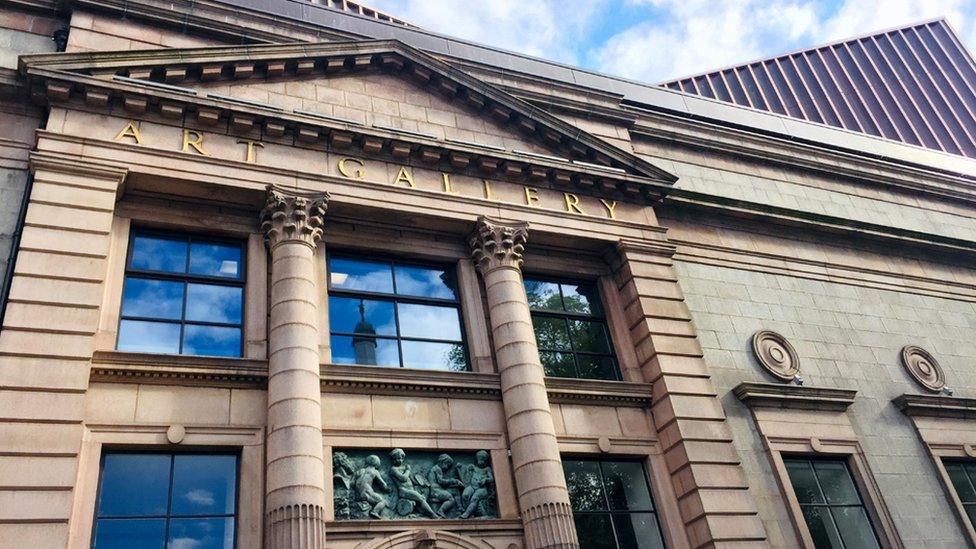
The magnificent surroundings of Aberdeen Art Gallery have now been returned to their late 19th Century glory - but it will only attract and maintain the predicted 250,000 visitors each year if it's part of a bigger cultural offering and if this £34.6m development is part of an ongoing investment.
Why has it taken so long? When the Heritage Lottery Fund was first established 25 years ago, the north east was slow to apply for funds. At one point, the area was regarded as a "cold spot" for funding.
It didn't help that high profile projects were contentious and divisive, like the Union Terrace Gardens redesign. It divided opinion locally and gave the impression that this was a city where the choice was between industry and creativity.
There is room for both and new plans for the gardens are part of the wider regeneration of the city centre.
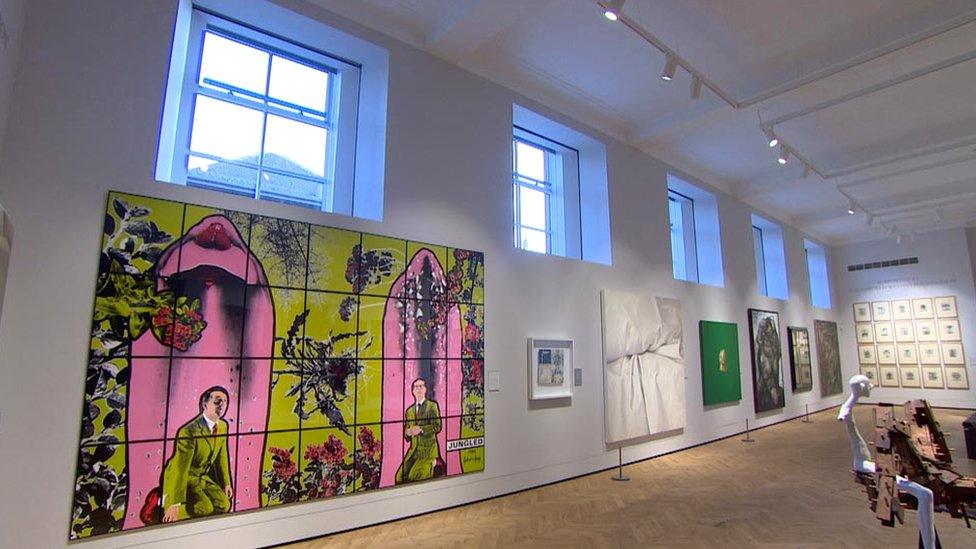
Compared to Dundee - which last year opened the first V&A Museum outside London - Aberdeen is late to the party. And compared to Glasgow, which has been building its creative industries for the last 30 years, it is way behind.
But festivals like Sound, Granite Noir and True North have shown the passion which exists in the north east for arts and culture, as well as the grit and steely determination to survive in lean times.
Aberdeen is not short of talent, or people willing to sing its praises, like Annie Lennox and Emeli Sande. Like Glasgow, and Dundee, it just needs to learn to love itself, and shout about it.
And the politicians, and funding bodies who've at last realised the potential for investment in arts and culture, need to realise they're in it for the long haul.
The £370m invested so far in the cultural sector is just the start. Buildings need performances, live music and theatre, fresh thinking and new faces. The benefits could be immense, but it takes time and money.
It shouldn't be hard to put art back in the heart of Aberdeen. It's been there all along.

The history of Aberdeen Art Gallery
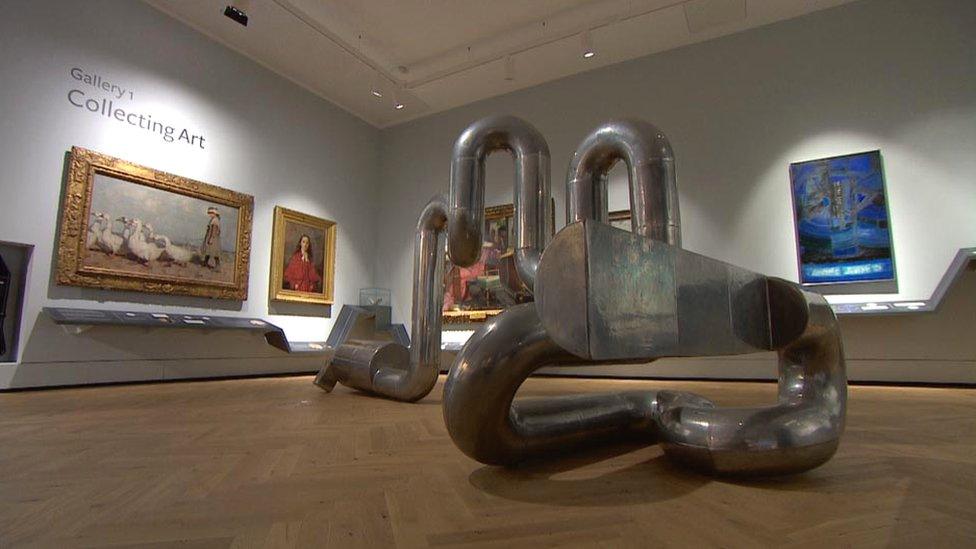
Designed by architect Alexander Marshall McKenzie (1848-1933)
The building in the city's Schoolhill area first opened in 1885
It was extended in the 1920s with the addition of the Cowdray Hall concert venue
Plans to redesign the building, originally estimated to cost £30m, were approved by councillors in 2013
The number of permanent galleries has increased from 11 to 19, with three more hosting special exhibitions
The number of items from the permanent collection which will be on display has trebled from 370 in 2015 to 1,080
More than 1,000 copper panels have been installed with the addition of a new floor


Hundreds of exhibits are on show in the refurbished gallery

'A showstopper attraction'
It is hoped that the revamped gallery will host special exhibitions by national and international artists, and attract more than 250,000 visitors a year.
VisitScotland described it as "a showstopper attraction that will underpin Aberdeen's cultural renaissance".
Aberdeen City Council's culture spokeswoman, Marie Boulton, said the local authority had been determined to "do it right".
She said: "You either chose to invest in your historical buildings, or you knock them down.
"That's not how the people of Aberdeen want their heritage treated.
"It's cost us more, yes, and it's been later than we would have liked, but it's been done right and it's been done well. I think it's worth every penny."
All images BBC copyright.
- Published22 October 2019

- Published18 June 2019
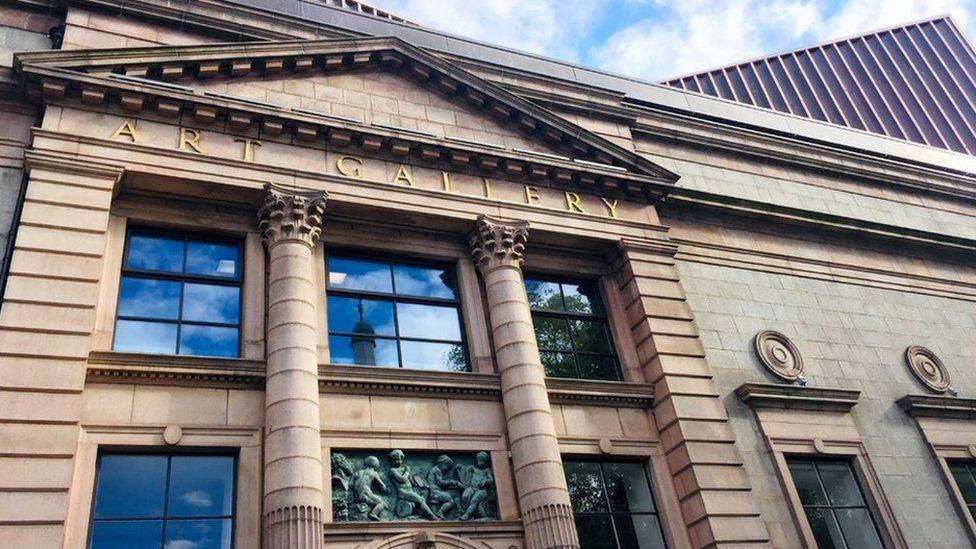
- Published24 May 2019

- Published28 September 2018
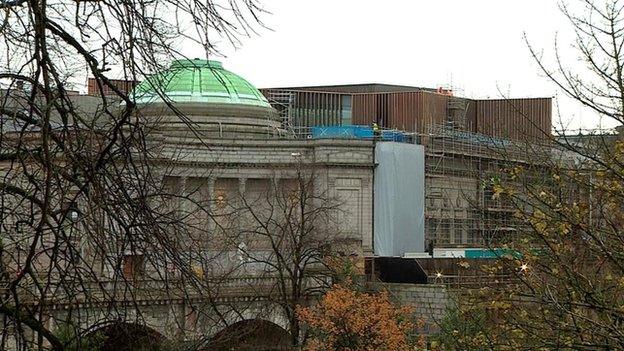
- Published22 November 2017

- Published18 December 2013
